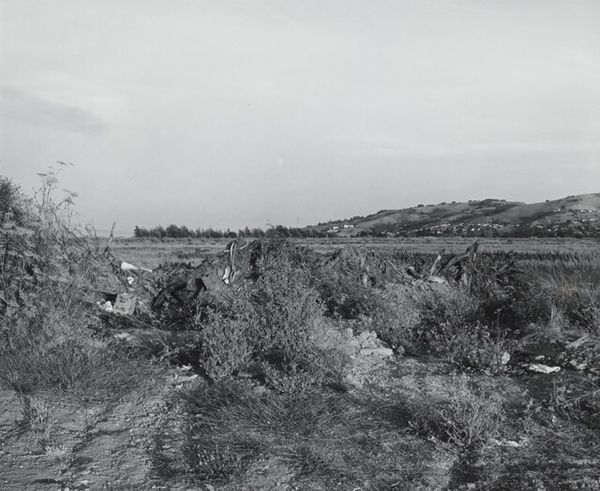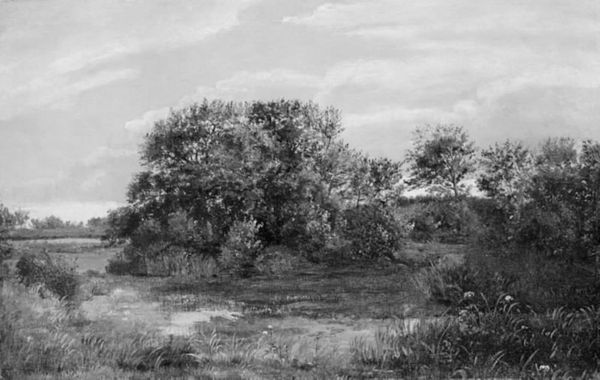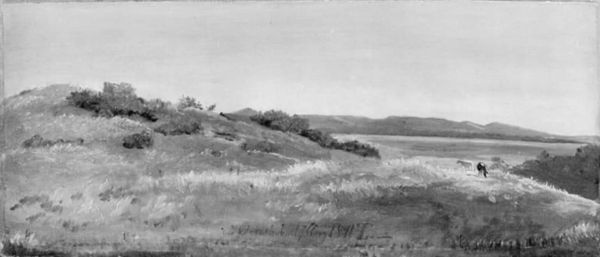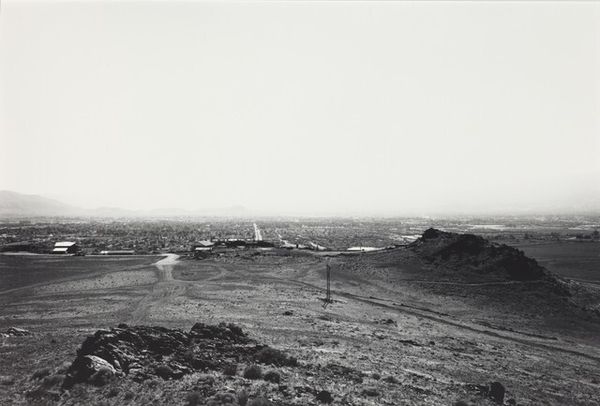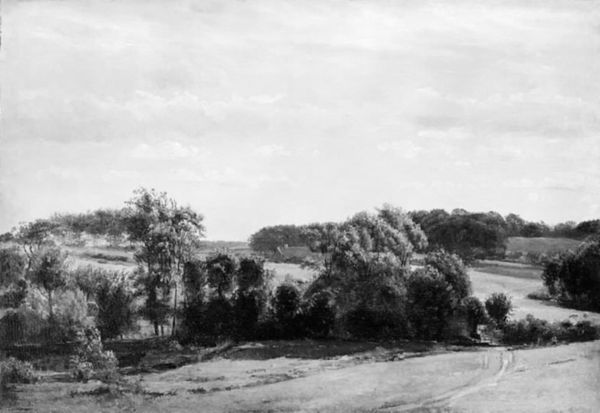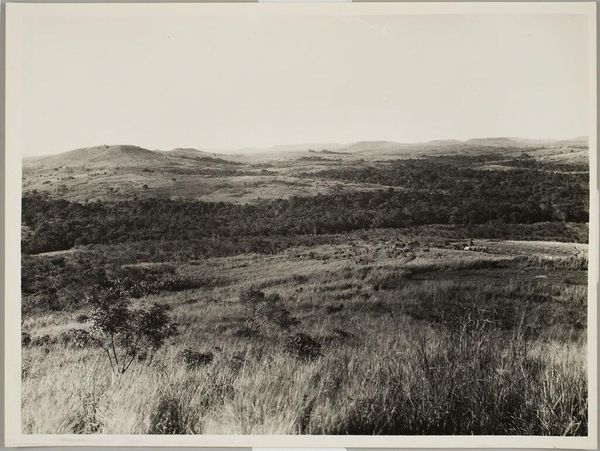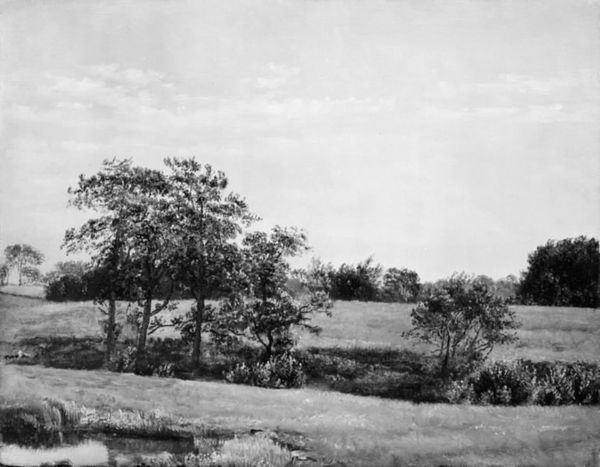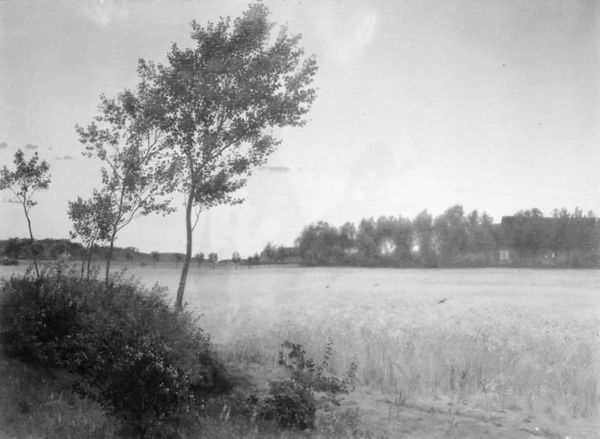
Dimensions: image: 22.6 × 28.8 cm (8 7/8 × 11 5/16 in.) sheet: 27.7 × 35.6 cm (10 7/8 × 14 in.)
Copyright: National Gallery of Art: CC0 1.0
Curator: Well, this image certainly sets a scene. At first glance, I’m struck by its quietness, a certain stillness captured in monochrome. What do you make of it? Editor: This is Robert Adams’ "The Interior of the Spit," a photograph from 2015. Adams is well known for his engagement with landscape and its transformations by human intervention and capitalist expansion. He critically explores power relations through images of environmental degradation, land use and the impact on communities. This reminds me of certain of his series in which empty landscapes highlight these topics. Curator: That context resonates strongly as I look at it again. There's a flatness, not just in tone but in affect – the landscape becomes emblematic, perhaps, of dispossession. The monochrome certainly emphasizes the idea that some elements have been removed, like diversity itself in favor of development... How does the photographic medium figure here? Is Adams making a comment through the photographic representation itself? Editor: The choice of black and white here removes all distractions and accentuates a critique, forcing the viewer to grapple with the structural implications of environmental exploitation and unequal resource distribution. It's very calculated – less aesthetic romanticism and more sociological document, asking who owns and controls this landscape, and who profits from its alteration? Also, there's an interesting reference to documentary photography, how is it framed and by whom and for which purposes. Curator: And I notice a horizon, not exactly straight; this disrupts any idealized composition, almost inviting further deconstruction... there's nothing obviously sublime about the framing, more an evenness of representation. Is Adams maybe leveling the playing field between man and nature, forcing both to be subjected to the lens without flattery? The power lies in representation, doesn't it? Editor: Absolutely, Adams turns the idea of landscape on its head; it becomes evidence of something deeply flawed in the intersection of societal, political and economical development that continues today. The monochrome transforms it from something specific into a generalized indictment. Curator: Ultimately, it's about using photography to reveal uncomfortable truths that are easily ignored in a world obsessed with progress. Editor: Indeed. And with such bleak eloquence. It speaks volumes about who pays the real price for economic development and growth.
Comments
No comments
Be the first to comment and join the conversation on the ultimate creative platform.

